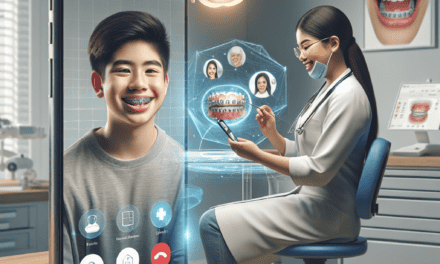The Growing Demand for Teen Anxiety Treatment Centers
In recent years, the mental health landscape has undergone significant changes, particularly concerning adolescents. The increasing prevalence of anxiety disorders among teenagers has led to a surge in demand for specialized treatment centers. This article explores the factors contributing to this growing demand, the types of treatments available, the role of technology in mental health care, the importance of family involvement, and the future of teen anxiety treatment centers.
Understanding Teen Anxiety: A Growing Concern
Teen anxiety is not a new phenomenon, but its recognition as a significant public health issue has gained momentum in recent years. According to the National Institute of Mental Health (NIMH), approximately 31.9% of adolescents aged 13-18 experience an anxiety disorder at some point in their lives. This statistic highlights the urgency of addressing mental health issues among teenagers.
Several factors contribute to the rising rates of anxiety among teens:
- Academic Pressure: The competitive nature of academic environments can lead to overwhelming stress. Teens often feel the need to excel in school, participate in extracurricular activities, and prepare for college, which can create a perfect storm for anxiety.
- Social Media Influence: The pervasive use of social media has transformed how teens interact and perceive themselves. Constant comparisons to peers and the pressure to maintain a curated online presence can exacerbate feelings of inadequacy and anxiety.
- Family Dynamics: Family issues, such as divorce, financial instability, or parental mental health problems, can significantly impact a teen’s emotional well-being. A supportive family environment is crucial for healthy development.
- Global Events: Events such as the COVID-19 pandemic have introduced unprecedented levels of uncertainty and fear, leading to increased anxiety among adolescents. The isolation and disruption of routine have further compounded these feelings.
- Stigma Around Mental Health: Although awareness of mental health issues has improved, stigma still exists. Many teens may hesitate to seek help due to fear of judgment, leading to untreated anxiety disorders.
Understanding these factors is essential for developing effective treatment strategies. As awareness grows, so does the need for specialized treatment centers that cater specifically to the needs of adolescents.
The Role of Teen Anxiety Treatment Centers
Teen anxiety treatment centers provide a structured environment where adolescents can receive comprehensive care tailored to their unique needs. These centers often employ a multidisciplinary approach, combining therapy, medication, and holistic practices to address anxiety disorders effectively.
Key components of treatment centers include:
- Individual Therapy: One-on-one sessions with licensed therapists allow teens to explore their feelings, develop coping strategies, and work through underlying issues contributing to their anxiety.
- Group Therapy: Group sessions provide a supportive environment where teens can share experiences and learn from one another. This communal aspect can help reduce feelings of isolation.
- Family Therapy: Involving family members in the treatment process can foster understanding and support. Family therapy helps address dynamics that may contribute to a teen’s anxiety.
- Medication Management: For some teens, medication may be necessary to manage symptoms. Treatment centers often have psychiatrists on staff to evaluate and prescribe appropriate medications.
- Holistic Approaches: Many centers incorporate mindfulness, yoga, and other holistic practices to promote overall well-being and teach teens how to manage stress effectively.
These centers are designed to create a safe and nurturing environment where teens can focus on their mental health without the distractions of everyday life. The structured setting allows for intensive treatment, which can lead to significant improvements in anxiety symptoms.
Technology and Teen Anxiety Treatment
The integration of technology into mental health treatment has revolutionized how care is delivered. Teletherapy, mobile apps, and online support groups have made mental health resources more accessible than ever before.
Some notable advancements include:
- Teletherapy: Virtual therapy sessions have become increasingly popular, especially during the COVID-19 pandemic. Teens can connect with therapists from the comfort of their homes, reducing barriers to access.
- Mental Health Apps: Numerous apps are designed to help teens manage anxiety through guided meditations, mood tracking, and cognitive-behavioral therapy (CBT) exercises. These tools can complement traditional therapy.
- Online Support Groups: Virtual support groups provide a platform for teens to connect with others facing similar challenges. This sense of community can be invaluable for those struggling with anxiety.
- Educational Resources: Online platforms offer a wealth of information about anxiety disorders, coping strategies, and treatment options. Educating teens and their families is crucial for reducing stigma and encouraging help-seeking behavior.
- Wearable Technology: Devices that monitor physiological responses, such as heart rate and sleep patterns, can provide insights into a teen’s mental health and help them identify triggers for anxiety.
While technology offers many benefits, it is essential to approach it with caution. Over-reliance on digital tools can lead to increased screen time, which may exacerbate anxiety for some individuals. Therefore, a balanced approach that combines technology with traditional therapeutic methods is recommended.
The Importance of Family Involvement in Treatment
Family dynamics play a crucial role in a teen’s mental health. Involving family members in the treatment process can enhance the effectiveness of therapy and provide a support system for the adolescent.
Key reasons for family involvement include:
- Understanding the Teen’s Experience: Family members can gain insights into the teen’s struggles, fostering empathy and support. This understanding can help reduce misunderstandings and conflicts at home.
- Addressing Family Dynamics: Family therapy can help identify and address patterns of behavior that may contribute to a teen’s anxiety. This process can lead to healthier communication and relationships within the family.
- Building a Support Network: Involving family members in treatment creates a network of support for the teen. This support can be instrumental in helping them navigate challenges and setbacks.
- Encouraging Healthy Coping Strategies: Families can learn together about effective coping strategies and how to implement them in daily life. This collective effort can reinforce positive behaviors.
- Reducing Stigma: When families openly discuss mental health, it helps normalize the conversation and reduces stigma. This openness can encourage other family members to seek help if needed.
Family involvement is not just beneficial for the teen; it can also provide parents and siblings with tools to manage their own stress and anxiety. By fostering a supportive home environment, families can play a pivotal role in their teen’s recovery journey.
The Future of Teen Anxiety Treatment Centers
As awareness of mental health issues continues to grow, the future of teen anxiety treatment centers looks promising. Several trends are emerging that may shape the landscape of adolescent mental health care:
- Increased Accessibility: Efforts are underway to make mental health services more accessible to underserved populations. This includes expanding teletherapy options and providing resources in schools.
- Integration of Services: Future treatment centers may adopt a more integrated approach, combining mental health services with primary care, education, and community resources to provide holistic support.
- Focus on Prevention: There is a growing emphasis on preventive measures, such as mental health education in schools and community programs aimed at reducing stigma and promoting well-being.
- Personalized Treatment Plans: Advances in research may lead to more personalized treatment plans based on genetic, environmental, and psychological factors, ensuring that each teen receives the most effective care.
- Collaboration with Schools: Treatment centers may increasingly collaborate with schools to provide on-site support and resources, creating a seamless transition between academic and therapeutic environments.
The future of teen anxiety treatment centers will likely be characterized by innovation, collaboration, and a commitment to addressing the unique needs of adolescents. As society continues to prioritize mental health, these centers will play a vital role in supporting the next generation.
Conclusion
The growing demand for teen anxiety treatment centers reflects a broader recognition of the importance of mental health in adolescents. As anxiety disorders become more prevalent, it is crucial to provide specialized care that addresses the unique challenges faced by teenagers today. By understanding the factors contributing to anxiety, the role of treatment centers, the impact of technology, the importance of family involvement, and the future of mental health care, we can work towards creating a supportive environment for teens struggling with anxiety.
As we move forward, it is essential to continue advocating for mental health resources, reducing stigma, and promoting awareness. By doing so, we can ensure that all adolescents have access to the care they need to thrive.





